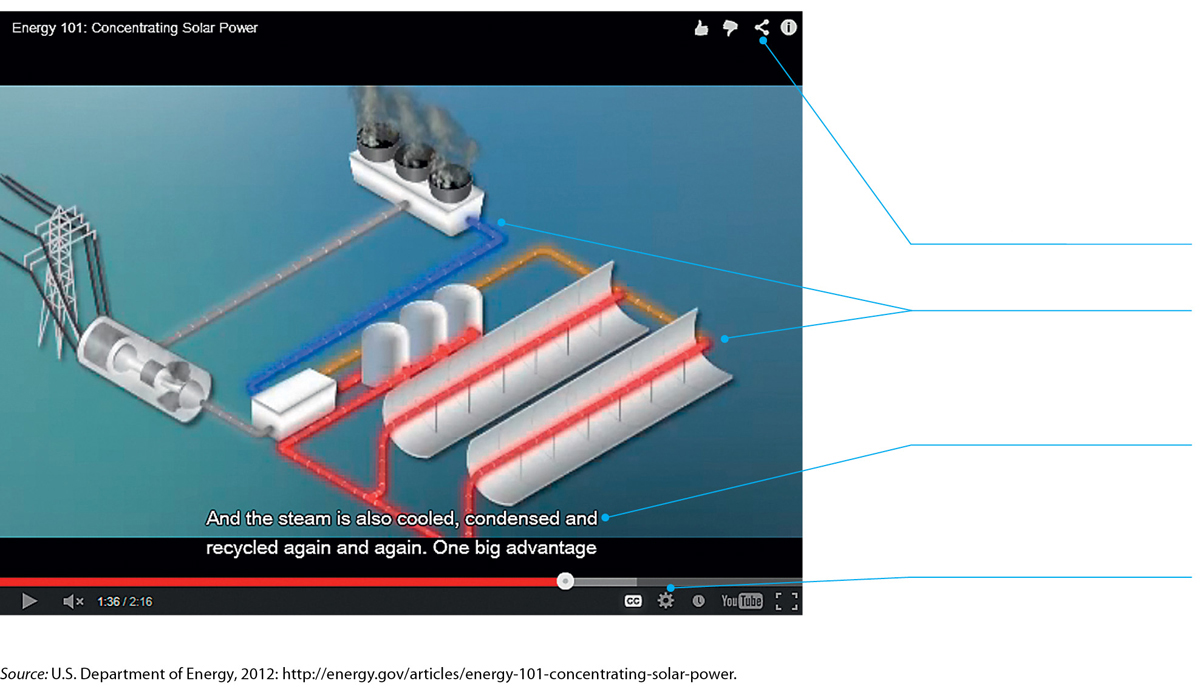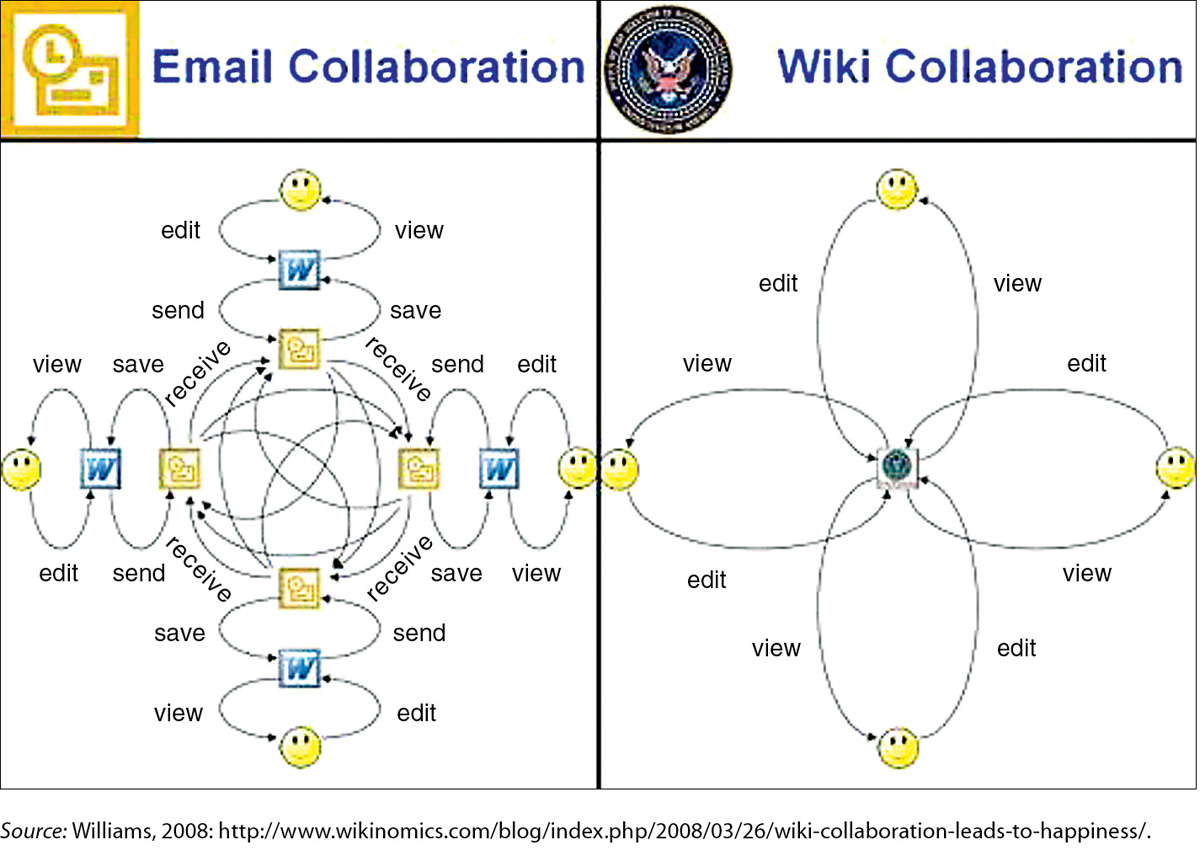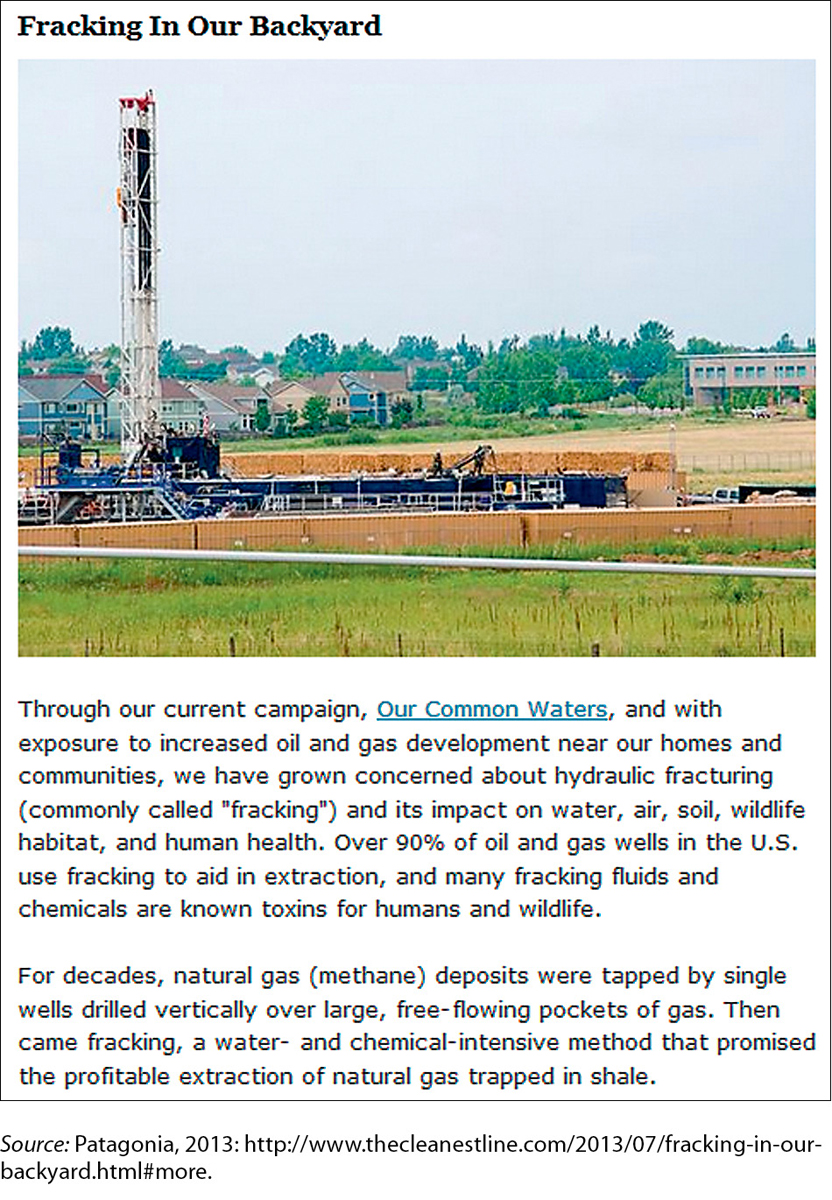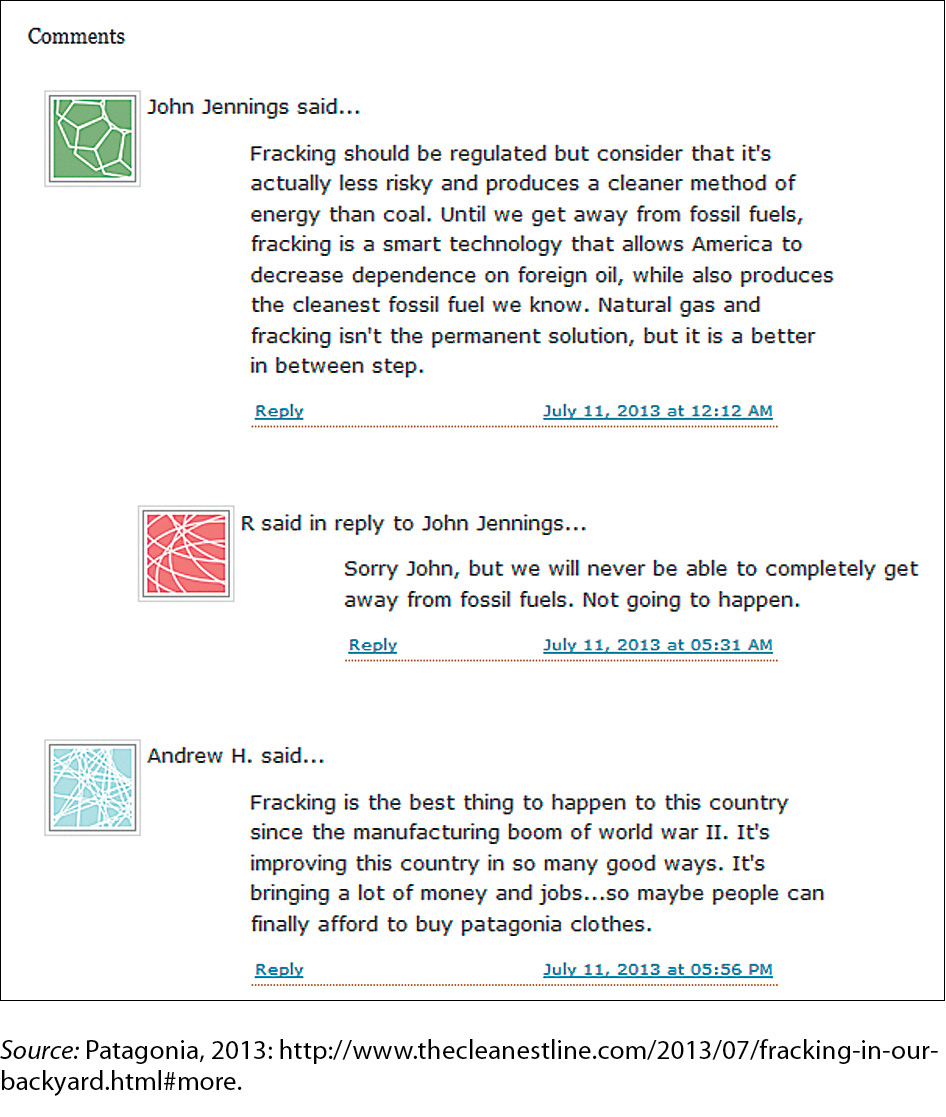A Look at Three Technical Documents
Figures 1.1, 1.2, and 1.3 present excerpts from technical documents. Together, they illustrate a number of the ideas about technical communication discussed in this chapter.

This screen is from a video produced by the Department of Energy and is intended to educate the general public about the basics of solar energy. Because the document includes narration, still images, video, and animation, creating it required the efforts of many professionals.
The video is meant to be easy to share on social media.
The video takes advantage of our cultural assumptions about color: red suggests heat, blue suggests cold.
The video was designed to accommodate people with disabilities: the viewer can listen to the narration or turn on the subtitles.
The document includes a text-

One characteristic that distinguishes technical communication from many other kinds of writing is its heavy use of graphics to clarify concepts and present data. This graphic, from a PowerPoint presentation, compares two technologies used for collaborative writing. The image on the left represents how a writer creates a document and then distributes it via email to others for editing. The image on the right represents how a writer creates a document in a wiki (an online writing and editing space), to which others come to view and edit the document.
The history of this graphic says something about how information flows in the digital age. The graphic was originally created by one person, Manny Wilson of U.S. Central Command, who shared it with a colleague at another U.S. government agency. Eventually, it made its way to another person, Anthony D. Williams, who incorporated it into a presentation he delivered at a corporation. From there, it went viral.
The writer who created this image doesn’t need to say that a wiki is a better tool than email for editing a document. The complexity of the image on the left, compared with the simplicity of the image on the right, shows why the wiki is the better tool for this job.
Figure 1.2 A Graphic Comparing Two Communication Media
Source: Williams, 2008: http:/


Patagonia, the manufacturer of outdoor clothing, hosts a blog called The Cleanest Line. In one recent post, “Fracking In Our Backyard,” the company sought to educate its readers about the controversy surrounding hydraulic fracturing. The post included links to many online sources about the controversy and presented the company’s perspective: “Because of fracking’s wide-
The post generated many comments, of which the first three are presented here. Notice that the third comment ends with a swipe at the company. Blogs are a popular way for organizations to interact with their stakeholders, and even though blog posts routinely elicit negative comments, most organizations believe that the occasionally embarrassing or critical comment is a reasonable price to pay for the opportunity to generate honest discussions about issues—
Figure 1.3 A Corporate Blog Post Presenting a Public-
Source: Patagonia, 2013: http:/